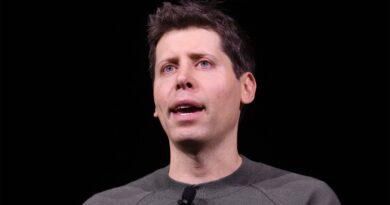Europe is more of a fuzzy tech cloud than a functioning ecosystem
Whenever I spend time in the European startup world, a lot of the conversation is focused on how it can differentiate itself. One of the recurring questions is: How do we build a startup ecosystem? That’s an excellent question.
The beginnings of an ecosystem are there, but unlike in the U.S., where there are a handful of major hubs attracting the bulk of the talent and investment, in Europe, there is an appetite for experimentation that fails to fully settle into a coherent whole.
Looking to Silicon Valley might be a trope, but the San Francisco Bay Area is by far the most mature ecosystem around. California attracted more than $100 billion of venture investment in 2022. New York is in a distant second place with around $30 billion, followed by Massachusetts (or more specifically, Boston), with around $20 billion. Europe, in comparison, saw around $100 billion of investment in 2022. That sounds like a big number, but compare the size of the economy of Europe versus that of California.
Europe may be in a state of rapid growth, but as an asset class, VC is lagging behind. For every person living in Europe, $134 dollars are invested in the local ecosystem. For California, the same number is $2,650. Image Credit: Haje Kamps / TechCrunch
You can find office buildings and fast internet in most places, so how did a sprawling area around San Francisco become a working ecosystem? The history is long and complex, and hard to replicate: Stanford University engineering professor Frederick Terman was focusing on radio engineering in the 1940s. Fueled by the Cold War and a lot of defense money, he built a department and taught a bunch of the people who would found the first wave of tech startups in the area.
Stanford created a business park to go along with its research activities, and it kept evolving with the times. The region found itself in an upward spiral: More money invested meant that more engineering talent flocked to Silicon Valley, which sparked more innovation, which led to more tech companies, which in turn meant more defense money and the first few private investors looking to Silicon Valley for opportunities. Lockheed opened a plant in Sunnyvale, mostly because that’s where it could find engineers. Bill Hewlett and Dave Packard founded HP in 1939, and Shockley Semiconductors was founded in 1956 — the same year its namesake, William Shockley, was awarded the Nobel Prize for co-inventing the transistor. Early employees at Shockley left to found AMD and Intel, and from there, the rest is history: Silicon Valley had such a concentration of funds, talent and tech, that it was almost unstoppable.
Fast-forward some 70 years and Silicon Valley has only continued to grow. For startups, the way this shows up is that a lot of people got very wealthy from tech, and they further accelerated the ecosystem by founding new companies. But — crucially — they also became angel investors and advisers to others in the ecosystem. And because those acquiring other businesses are also often based in Silicon Valley, integrating the tech and the staff becomes a lot easier.
So how does this relate to Europe? Well, according to top European VC Creandum’s recent report, there are 65 cities hosting 514 “tech hubs” on the continent. Of course, it’s positive that the European startup scene is evolving and growing, but even after a couple decades of trying to make ecosystems thrive, Europe appears to be spinning its wheels. According to the report, “Europe finally has the pieces in place to challenge the US as the world’s leading tech ecosystem.” It sounds good, but there’s still a lot of work to be done before there’s a fully functioning, self-sustaining startup ecosystem in place. The truth is, every locale is trying to do it differently. That means there can’t be a single, force-of-nature strength ecosystem; instead, the result is a smattering of promising ecosystems that don’t truly get the job done.
Europe is more of a fuzzy tech cloud than a functioning ecosystem by Haje Jan Kamps originally published on TechCrunch





